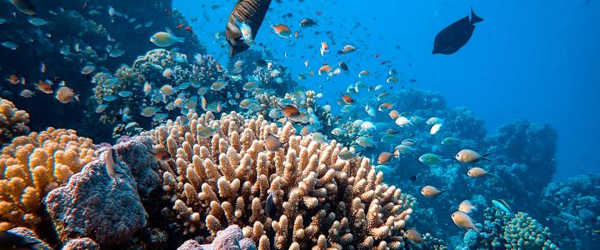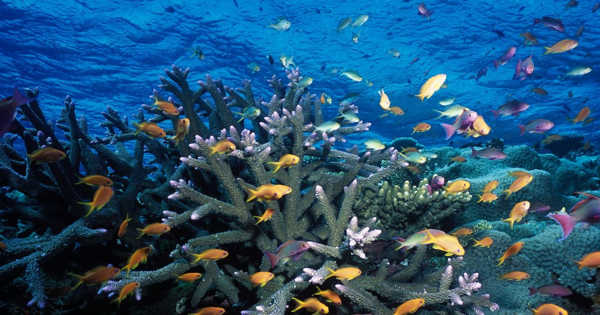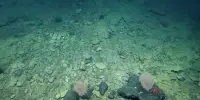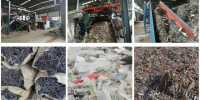Using data from the Khaled bin Sultan Living Oceans Foundation’s Global Reef Expedition, scientists have developed a new method for modeling and mapping the health of coral reef ecosystems. This novel method, presented today at the International Coral Reef Symposium (ICRS), can identify which natural and anthropogenic factors are most likely to result in long-term vibrant coral and fish communities. Their findings can assist scientists in determining which reefs are most likely to survive in a changing world.
The new models are a first step in being able to produce maps of global coral reef resilience.
Anna Bakker, a scientist from the South Pacific, needed a lot of data on coral reefs to create these models. She discovered what she needed in the data collected during the Khaled bin Sultan Living Oceans Foundation’s (KSLOF) Global Reef Expedition, a 10-year research mission that circumnavigated the globe to study the health and resilience of coral reefs in an attempt to address the coral reef crisis.
This expedition was a huge undertaking, involving over 200 scientists from all over the world who collaborated with local experts to survey over 1,000 reefs in 16 countries. The expedition produced over 65,000 square kilometers of high-resolution marine habitat maps that KSLOF verified with data collected in the field, in addition to a treasure trove of standardized and geo-referenced data on coral cover, fish biomass, and algae.
Scientists have developed a new way to model and map the health of coral reef ecosystems using data collected on the Khaled bin Sultan Living Oceans Foundation’s Global Reef Expedition. The new models are a first step in being able to produce maps of global coral reef resilience.
“This research would not have been possible without the massive amount of field data collected on the Global Reef Expedition,” said Anna Bakker, the study’s lead author and a Ph.D. student at the University of Miami’s Rosenstiel School of Marine and Atmospheric Science. “The sheer volume of benthic and fish observations gathered in the field from around the world allowed us to take a holistic look at indicators of coral reef health, such as coral cover or fish biomass, and figure out what drives one coral reef to be healthier than another.”
Bakker incorporated data from the South Pacific, including Palau, the Solomon Islands, New Caledonia, Fiji, Tonga, the Cook Islands, and French Polynesia, into her models. She correlated fish biomass, coral and algal cover, and dozens of natural and anthropogenic factors such as wave energy, degree heating weeks, human density, and protected areas to determine which factors were driving differences in the marine environment.
She discovered that only a few major factors influenced the health of the coral reef community. Biophysical drivers such as water temperature were the primary drivers of fish biomass. In contrast, anthropogenic factors drove the algal cover, with significantly fewer macroalgae in areas with more terrestrial and marine protected areas. Coral cover was more complicated, and it was linked to a variety of natural and anthropogenic factors, most notably human population, development, and water temperature.

This concise list of the most important drivers can assist conservationists in prioritizing which factors must be addressed in order to protect coral reefs and identifying which reefs are more likely to thrive in a rapidly changing world.
“Anna’s work is an important step in scaling up local measures of reef resilience to a global assessment,” said Sam Purkis, Chief Scientist at KSLOF and Professor and Chair of the Department of Marine Geosciences at the University of Miami’s Rosenstiel School of Marine and Atmospheric Science.
A new coral reef modeling method presented at the International Coral Reef Symposium (ICRS) can identify which natural and anthropogenic factors are most likely to lead to healthy coral and fish communities, as well as assist scientists in identifying the reefs most likely to survive in a changing world.
The model results presented today were for coral reefs in the South Pacific, but Bakker plans to use the same modeling approach in future research to identify the primary drivers of coral reef ecosystem health and the status of their fish and coral communities, as well as the model and map the potential resilience of coral reefs in the Indian and Pacific Oceans and their associated seas.
These coral reef resiliency maps will give marine managers critical information about where to direct their limited time and resources to protect coral reefs. Simultaneously, the analysis of the primary socio-environmental factors influencing the health of coral and reef fish communities will provide conservationists with insight into what measures they can take to save these reefs before it is too late.
“We had no idea our data would be used in this way when we embarked on the Global Reef Expedition in 2006. The technology to create and run these types of models did not yet exist. But we knew we were gathering valuable data that would have to withstand the test of time “said Alexandra Dempsey, Director of Science Management at KSLOF.
“The Global Reef Expedition mission allowed us to study some of the world’s most remote and pristine coral reefs. It is now providing the conservation community with the data needed to identify reefs that can be saved before it is too late. Let us not squander this opportunity.”















